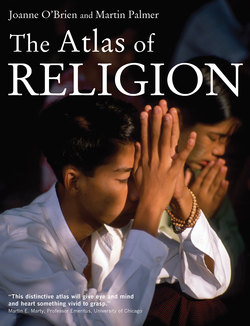Читать книгу The Atlas of Religion - Joanne O'Brien - Страница 9
На сайте Литреса книга снята с продажи.
ОглавлениеIt was a fond hope of many secular ideologies in the last 100 years that ‘religion will wither and die’ in the light of social and technological advancements. From marxism to fascism, the expectation was that religion would be thrown aside as an emotional and intellectual prop that was no longer needed. This expectation was largely turned on its head during the last 20 years, and continues to be so. Instead, it has tended to be the ideologies that have faded, not the religions. In this new edition of the atlas, first published in 1993, we have a whole map that records this. ‘Emerging from Persecution’ (pp 66–67) charts the unprecedented levels of persecution against all major religions that has taken place since the beginning of the 20th century. More religious buildings have been damaged or destroyed, and more people have been killed for their religion during this period than in any previous century. Yet religious communities have recovered and are, in many, cases as numerous as before. Whether it is Daoists in China – almost wiped out during the Cultural Revolution of 1966 to 1974, the Tibetan Buddhists – persecuted by communism from 1949 to the present day, or Russian Orthodox Christians – attacked from 1917 until the 1980s, religion has not withered and in part, the need for an atlas such as this reflects that fact. Religious communities have also, on occasion, proved more sustainable than nation states. For example, when Zambia gained independence in 1964, the schools, colleges and health networks of hospitals and clinics run by the churches and the mosques were nationalized. The failure of the Zambian state has meant that many of these, often in a state of physical and economic collapse, have been handed back to the churches and mosques to run again, as we show in the map ‘Shared World’ (pp 70–71). The flip-side of the return or rise of the role of religion has been a growth in religiously inspired violence. While it is true to say that the majority of the last 100 years saw secular ideologies attacking religions, today that has been replaced by religions attacking secular societies, or waging war on other religious communities and identities. The recent rise of terrorists claiming to act in the name of Islam, the resurgence of religious conflict in a previously stable and multi-faith Indonesia, or the role of militant Buddhism in Sri Lanka’s long running civil war underlines why we all need to know and understand more about the religious nature of the world today. The re-emergence of old antagonisms, rooted in history, has led
Introduction
